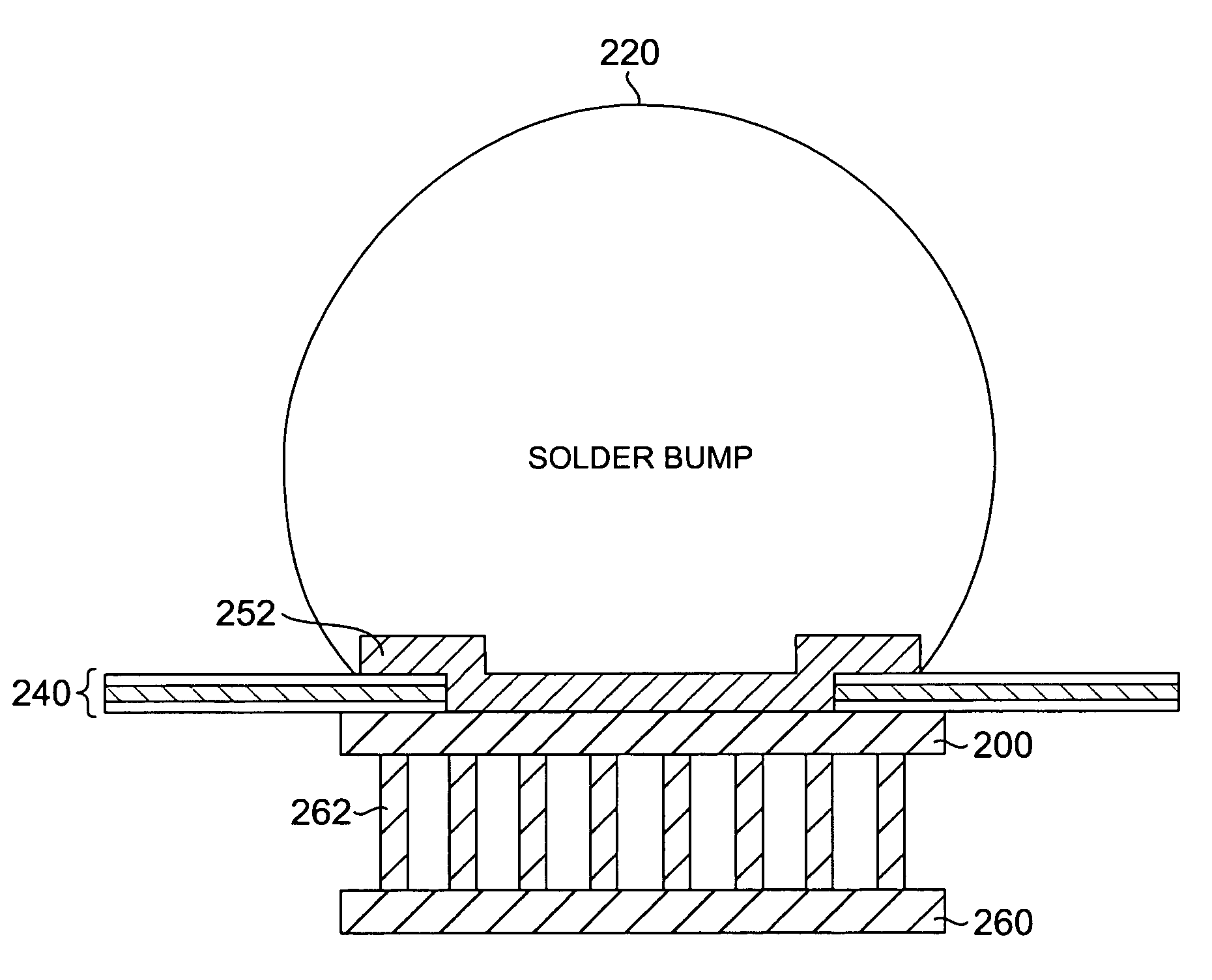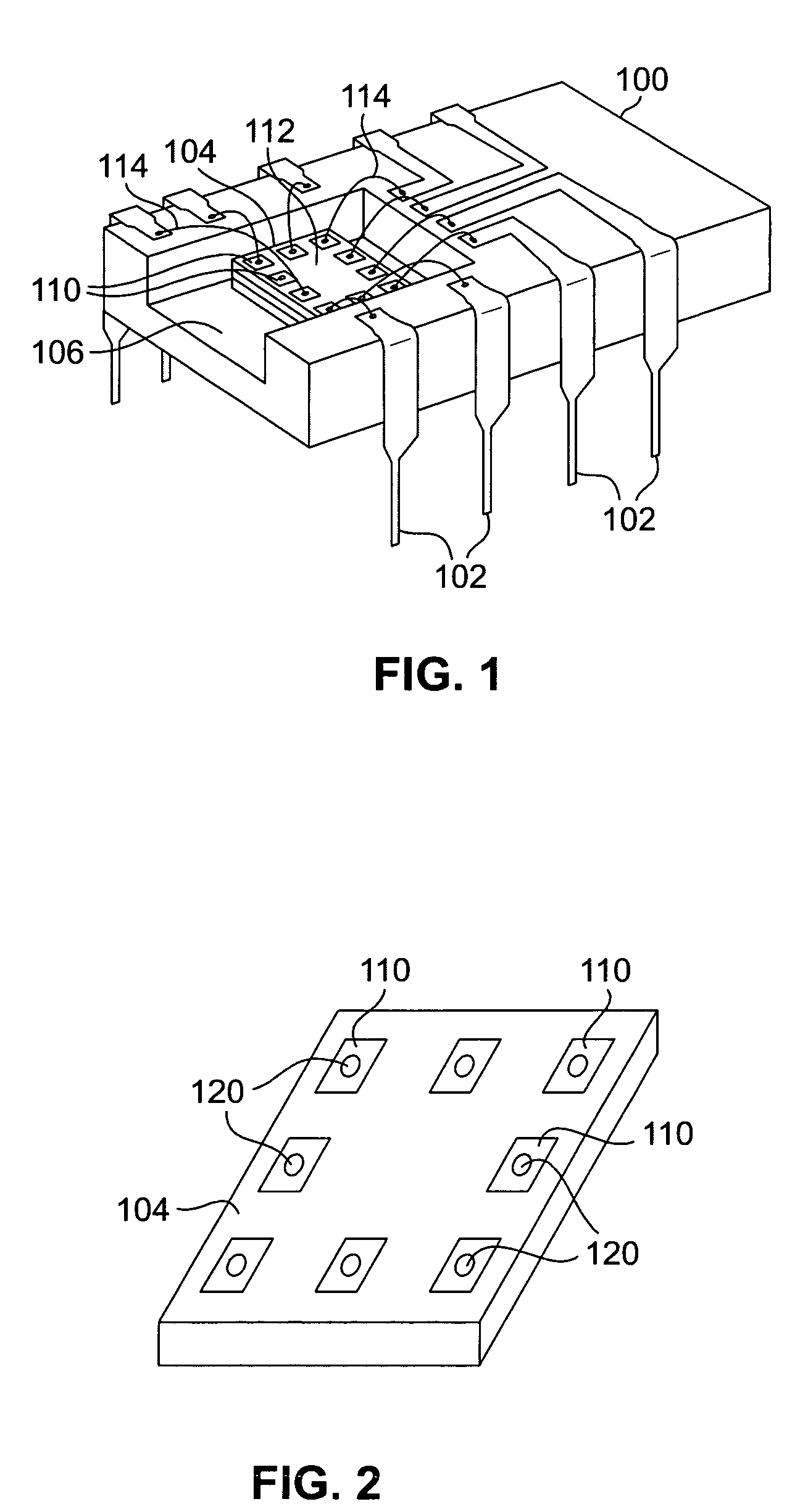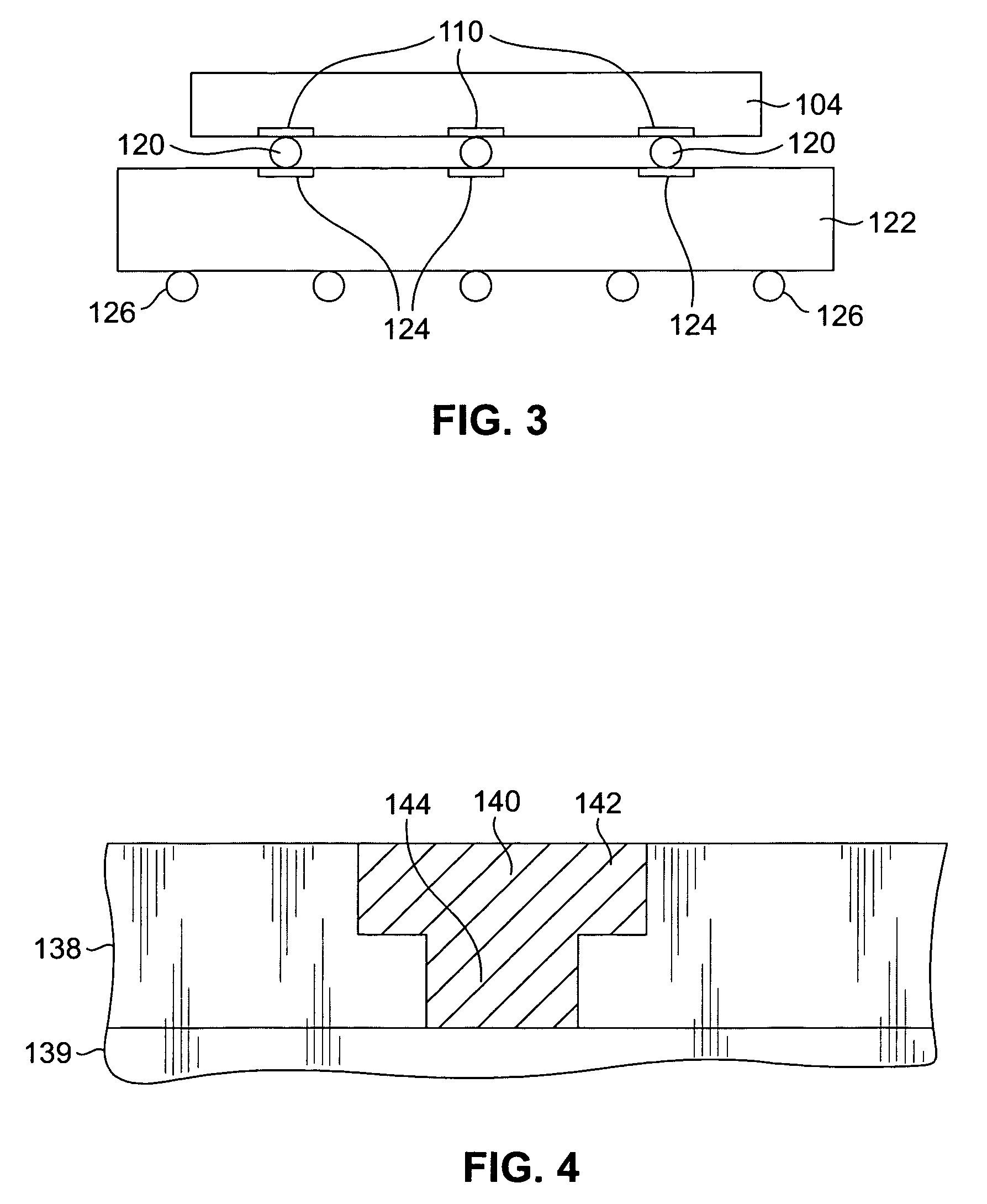Structure and method for bonding to copper interconnect structures
a technology of interconnect structure and structure, applied in the direction of soldering apparatus, semiconductor/solid-state device details, manufacturing tools, etc., can solve the problems of not being implemented in commercial fabrication processes, unable to achieve the effect of reducing the number of holes, and increasing the difficulty of deposited conductive materials in the smaller openings
- Summary
- Abstract
- Description
- Claims
- Application Information
AI Technical Summary
Benefits of technology
Problems solved by technology
Method used
Image
Examples
Embodiment Construction
[0037]Before describing in detail the particular copper oxide cleaning process and a structure so formed in accordance with the present invention, it should be observed that the present invention resides primarily in a novel and non-obvious combination of elements and method steps. Accordingly, these elements and steps have been represented by conventional elements and steps in the drawings, showing only those specific details that are pertinent to the present invention so as not to obscure the description with structural details that will be readily apparent to those skilled in the art having the benefit of the description herein.
[0038]According to the teachings of the present invention, the prior art step of RF back-sputtering is replaced with a cleaning method that employs a reducing atmosphere to remove oxidation from a copper bond pad of an integrated circuit. In one embodiment the reducing atmosphere comprises a plasma containing hydrogen (H2) or ammonia (NH3) (or another hydr...
PUM
| Property | Measurement | Unit |
|---|---|---|
| length | aaaaa | aaaaa |
| length | aaaaa | aaaaa |
| surface reflectivity | aaaaa | aaaaa |
Abstract
Description
Claims
Application Information
 Login to View More
Login to View More - R&D
- Intellectual Property
- Life Sciences
- Materials
- Tech Scout
- Unparalleled Data Quality
- Higher Quality Content
- 60% Fewer Hallucinations
Browse by: Latest US Patents, China's latest patents, Technical Efficacy Thesaurus, Application Domain, Technology Topic, Popular Technical Reports.
© 2025 PatSnap. All rights reserved.Legal|Privacy policy|Modern Slavery Act Transparency Statement|Sitemap|About US| Contact US: help@patsnap.com



